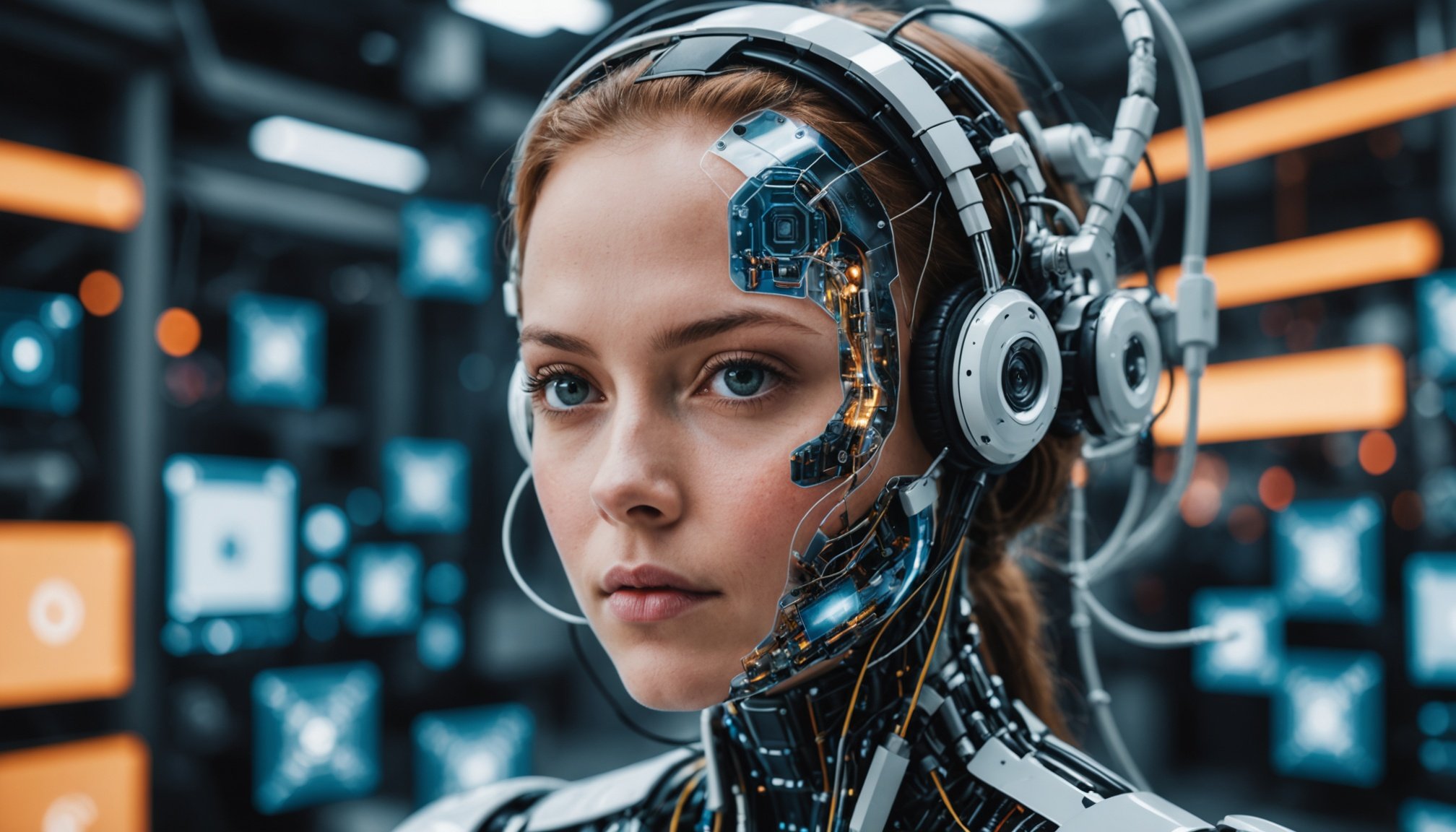Emerging Trends in AI Image Processing
In the rapidly evolving field of image processing, innovative AI trends are transforming how machines interpret and enhance visual data. As deep learning architectures become more sophisticated, they significantly impact image enhancement techniques, enabling exceptional clarity and detail that were previously unattainable. Image processing advancements now employ deep neural networks to automate everything from denoising to super-resolution, enhancing both efficiency and quality.
A key player in these advancements is computer vision algorithms. These algorithms, through the use of AI, are becoming more adept at understanding context, which improves their accuracy in tasks like facial recognition, object detection, and scene reconstruction. The adoption of AI-driven methodologies is not just limited to improving what machines see but also how they interpret and manipulate images, leading to more precise and reliable outcomes.
Topic to read : Empowering Breakthroughs: Harnessing Quantum Computing to Transform Large-Scale Optimization Problems
Moreover, the synergy between AI and image processing paves the way for applications that were once considered futuristic. From autonomous vehicles to smart healthcare diagnostics, these emerging trends redefine industry standards and open avenues for technological innovation. As AI continues to evolve, its intersection with image processing will undoubtedly bring about more revolutionary changes.
Methodologies for Enhancing AI Image Processing
In recent years, AI processing methodologies have reshaped the landscape of image enhancement, setting new standards in accuracy and efficiency. Traditional image enhancement techniques, often reliant on basic algorithms and manual adjustments, are now being overshadowed by AI-driven approaches that harness the power of deep learning. These innovative methods have introduced unprecedented levels of detail and precision in image analysis.
Also to read : Revamping City Traffic: Harnessing AI for Smarter Urban Transportation Flow
One key aspect of these methodologies is the application of machine learning models, which are tailored for specific tasks like denoising, feature extraction, and colour correction. These models leverage vast datasets to learn and predict patterns, enabling real-time enhancements that were once labor-intensive and time-consuming.
Comparative studies between conventional and AI-driven techniques reveal a significant advantage in the latter’s ability to automate complex processes and deliver consistently superior outcomes. With the integration of neural networks, AI methodologies adapt to various image contexts, boosting their effectiveness across different scenarios.
The application of these advanced methodologies in image analysis not only optimises the visual outcome but also enhances the interpretative capabilities of machines, marking a pivotal step in the evolution of image processing technologies.
Real-World Applications of AI in Image Processing
In the realm of AI image processing applications, various industries are already benefiting from the transformative capabilities of this technology. Healthcare, for instance, utilises AI for enhanced image processing in diagnostics, significantly improving the accuracy of MRI and CT scan analyses. By harnessing image processing advancements, medical professionals can detect anomalies faster and with greater precision.
In manufacturing, AI-driven image solutions streamline quality control processes, identifying defects in products that might be missed by human inspection. This industry use case underlines how AI enhances efficiency and reduces production errors.
Furthermore, autonomous vehicles represent a rapidly growing industry likely to adopt more sophisticated AI-driven image solutions. As safety standards tighten, the need for accurate image processing for navigation and obstacle detection becomes paramount.
Case studies across different sectors demonstrate how AI-driven image processing delivers superior results, radically transforming outcomes in real-world applications. Continued innovation in computer vision algorithms promises even greater integration of AI in traditional practices, pushing the boundaries of what’s possible. As AI technology advances, more industries are expected to explore its potential, enhancing both functionality and productivity.
Innovative Tools and Frameworks
The landscape of AI image processing is brimming with cutting-edge tools and frameworks designed to elevate the field’s capabilities. AI tools such as TensorFlow, PyTorch, and OpenCV have become indispensable for developers, offering powerful libraries and models tailored for complex image tasks. Each tool provides unique functionalities, from real-time image manipulation to training sophisticated deep learning models.
Prominent image processing frameworks also cater to varied needs, offering tailored solutions for different applications. For instance, Keras is known for its simplicity and user-friendly interface, making it ideal for beginners venturing into AI. Meanwhile, platforms like Caffe excel in speed and efficiency, crucial for large-scale image processing projects.
These AI tools are defined by their effectiveness and ease of use, with comprehensive documentation and community support enhancing user experience. When choosing the right framework, factors like functionality, computational power, and user familiarity play pivotal roles.
Evaluating these tools reveals the growing trend towards more integrative and accessible image processing frameworks. As technologies evolve, ongoing improvements in these tools will likely continue to streamline workflows, encouraging broader adoption across various sectors.
Expert Insights and Interviews
Understanding AI image processing insights is greatly enhanced by tapping into expert opinions. Professionals from various fields offer invaluable perspectives on the unique challenges faced in AI image processing. For example, they often highlight the need for high computational power and extensive data sets, which are critical in training effective AI models. This necessity can be a barrier for smaller firms.
Through interviews with industry professionals, shared experiences reveal the strategic integration of AI in their workflows, leading to improved efficiency and accuracy in tasks traditionally done manually. One common theme is the growing reliance on automated systems for routine image analysis, freeing up human resources for more complex problem-solving.
Moreover, experts provide predictions for the future of AI in image processing, often foreseeing more personalized and adaptive AI solutions tailored to specific industries. As AI continues to evolve, they anticipate that its capabilities will expand, pushing the boundaries of what’s technologically possible and opening new ethical considerations regarding data privacy and bias. Such insights not only offer a deeper understanding of current trends but also pave the way for future developments in the field.
Future Developments in AI Image Processing
As the future of AI imaging unfolds, several key trends are poised to transform image processing. One such trend is the development of more robust algorithms capable of understanding and interpreting complex visual data. The continuous improvement in hardware will also play a vital role by enabling faster processing and greater detail in images, enhancing real-time applications.
Advancements in AI trends suggest that image processing will become even more integrated within industries, especially with the anticipated rise of edge computing. This decentralised form of data processing can foster faster decision-making and reduce reliance on cloud-based solutions, leading to more practical and scalable applications.
Alongside these technological shifts, ethical considerations are gaining prominence. The potential impact of AI developments in image processing includes privacy concerns and biases inherent in training data. Addressing these issues will be crucial as innovation advances, ensuring that AI systems are designed and deployed responsibly.
The future holds promise for AI-driven image solutions to extend into new domains, unlocking possibilities in areas such as immersive media and remote sensing. As technology evolves, staying informed about emerging trends and ethical challenges will be imperative for stakeholders across various sectors.










